Current Program
The Council’s current scientific program consists of eight program area committees (PACs)
Committee |
Title |
Chair |
| PAC 1 | 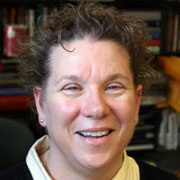
GAYLE E. WOLOSCHAK
is a Professor of Radiation Oncology and Radiology at Northwestern University Feinberg School of Medicine in Chicago and Associate Dean of the Graduate School. She and her group have been involved in studies of molecular consequences of radiation exposure, late tissue effects associated with radiation, and the use of radiation-inducible nanomaterials for cancer imaging and therapy. Dr. Woloschak also teaches radiation biology to radiation oncology and radiology residents, cardiology trainees, and graduate students and manages the Advanced Grant Writing Workshop for the Radiological Society of North America (RSNA). She earned her PhD in medical sciences from the University of Toledo (Ohio) and did post-doctoral studies in molecular biology at the Mayo Clinic. She has served on review panels for various federal agencies including the National Institutes of Health, the National Aeronautics and Space Administration, the U.S. Department of Energy, RSNA, the U.S. Army Medical Research and Materiel Command, and others. She is currently Editor-in-Chief for the International Journal of Radiation Biology, Section Editor for PLOS One, and serves on a variety of editorial boards. She is Chair of NCRP Program Area Committee 1, has served on organizational committees for several NCRP meetings, and has been involved in committees for several NCRP reports. She also served as President of the Radiation Research Society and is a member of the U.S. delegation to the United Nations Scientific Committee on the Effects of Atomic Radiation. 
Jonine L. Bernstein is an Attending Epidemiologist at the Memorial Sloan-Kettering Cancer Center (MSKCC) in New York City. Her core research focus is on breast cancer and gliomas and on understanding cancer risk and progression in order to identify those at highest risk because of gene carrier status, environmental exposures, or a combination of both. Dr. Bernstein is the Principle Investigator of the National Cancer Institute (NCI)-funded international 24-center Women's Environmental Cancer Radiation and Epidemiologic (WECARE) Study which was specifically designed to examine the interaction of radiation exposure and genetic predisposition in breast cancer, especially radiation-associated contralateral breast cancer (CBC) among 3,700 women with CBC and unilateral breast cancer. The WECARE Study has served as the source population for studies of candidate genes such as BRCA1, BRCA2, CHEK2, and ATM, candidate gene pathways of DNA damage response involved in radiation-induced double-strand break repair—ATM, CHEK2, P53 binding protein (53BPI), and MDC1, Mre11, Rad50, and Nbs1 (e.g., MRN nuclease complex), a genome-wide association study, and most recently mammographic density. The global hypothesis across these studies is that women who carry certain types of mutations will be more susceptible to breast cancer than noncarriers, and possibly to radiation-associated breast cancer. Dr. Bernstein currently serves as a member of the Board of Directors of the American College of Epidemiology, the External Advisory group for the NCI-sponsored Breast Cancer Family Registry, the National Council on Radiation Protection and Measurements, and most recently the NCI Board of Scientific Counselors-Clinical Sciences and Epidemiology. For the past two years, she has served on the Organizing Committee of the American Statistical Association Conference on Radiation and Health (2012 and 2014 meetings), and was Co-Chair of the Third North American Congress of Epidemiology, held in June 2011 for which she was honored by the 2012 ACE Award for Leadership and Service in Epidemiology. Dr. Bernstein holds a PhD in Epidemiology from Yale University, an MS in Applied Biometry from the University of Southern California, and an AB from Brown University. Before joining the faculty at MSKCC, she was Deputy Director of the Division of Epidemiology at Mount Sinai School of Medicine. |
|
| SC 1-28 | Recommendations on Statistical Approaches to Account for Dose Uncertainties in Radiation Epidemiologic Risk Models | 
Jonine L. Bernstein is an Attending Epidemiologist at the Memorial Sloan-Kettering Cancer Center (MSKCC) in New York City. Her core research focus is on breast cancer and gliomas and on understanding cancer risk and progression in order to identify those at highest risk because of gene carrier status, environmental exposures, or a combination of both. Dr. Bernstein is the Principle Investigator of the National Cancer Institute (NCI)-funded international 24-center Women's Environmental Cancer Radiation and Epidemiologic (WECARE) Study which was specifically designed to examine the interaction of radiation exposure and genetic predisposition in breast cancer, especially radiation-associated contralateral breast cancer (CBC) among 3,700 women with CBC and unilateral breast cancer. The WECARE Study has served as the source population for studies of candidate genes such as BRCA1, BRCA2, CHEK2, and ATM, candidate gene pathways of DNA damage response involved in radiation-induced double-strand break repair—ATM, CHEK2, P53 binding protein (53BPI), and MDC1, Mre11, Rad50, and Nbs1 (e.g., MRN nuclease complex), a genome-wide association study, and most recently mammographic density. The global hypothesis across these studies is that women who carry certain types of mutations will be more susceptible to breast cancer than noncarriers, and possibly to radiation-associated breast cancer. Dr. Bernstein currently serves as a member of the Board of Directors of the American College of Epidemiology, the External Advisory group for the NCI-sponsored Breast Cancer Family Registry, the National Council on Radiation Protection and Measurements, and most recently the NCI Board of Scientific Counselors-Clinical Sciences and Epidemiology. For the past two years, she has served on the Organizing Committee of the American Statistical Association Conference on Radiation and Health (2012 and 2014 meetings), and was Co-Chair of the Third North American Congress of Epidemiology, held in June 2011 for which she was honored by the 2012 ACE Award for Leadership and Service in Epidemiology. Dr. Bernstein holds a PhD in Epidemiology from Yale University, an MS in Applied Biometry from the University of Southern California, and an AB from Brown University. Before joining the faculty at MSKCC, she was Deputy Director of the Division of Epidemiology at Mount Sinai School of Medicine. 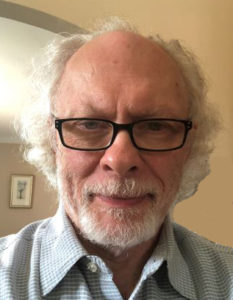
Harry M. Cullingswas Chief of the Statistics Department at the Radiation Effects Research Foundation (RERF) in Hiroshima and Nagasaki, Japan, until 2018 and is now a consultant to RERF, working on projects including new anthropomorphic dosimetry models of the human body and analysis of biodosimetry results. He has been conducting research at RERF since 1999. RERF is a public interest foundation funded by the Japanese Ministry of Health, Labour and Welfare and the U.S. Department of Energy (DOE). Dr. Cullings holds a BS in Fundamental Sciences from Lehigh University, and an MS in Medical Physics and PhD in Analytical Health Sciences (Biometrics) from the University of Colorado Health Sciences Center in Denver, Colorado. He completed a postdoctoral fellowship in Radiation Sciences, funded by the U.S. Department of Energy (DOE) at the University of Pittsburgh. The emphasis of Dr. Cullings’ research is on radiation dosimetry and other aspects of radiation epidemiology, including dosimetric uncertainty and applications of spatial statistics. Dr. Cullings has published numerous reports, papers in scientific journals, and book chapters on subjects related to radiation dosimetry and radiation health effects research. He served as a member of the Joint U.S.-Japan Working Group on the Reassessment of Atomic-Bomb Dosimetry, which created the Dosimetry System 2002 that is currently in use at RERF. Dr. Cullings served as a member of the executive council of the Radiation Research Society in 2019 to 2020. In 2020 he was appointed by the U.S. National Academy of Science to their Committee on the Assessment of Strategies for Managing Cancer Risks Associated with Radiation Exposure During Crewed Space Missions. Dr. Cullings was a member of the U.S. Environmental Protection Agency’s Radiation Advisory Committee from 2017 to 2021. |
| PAC 2 | 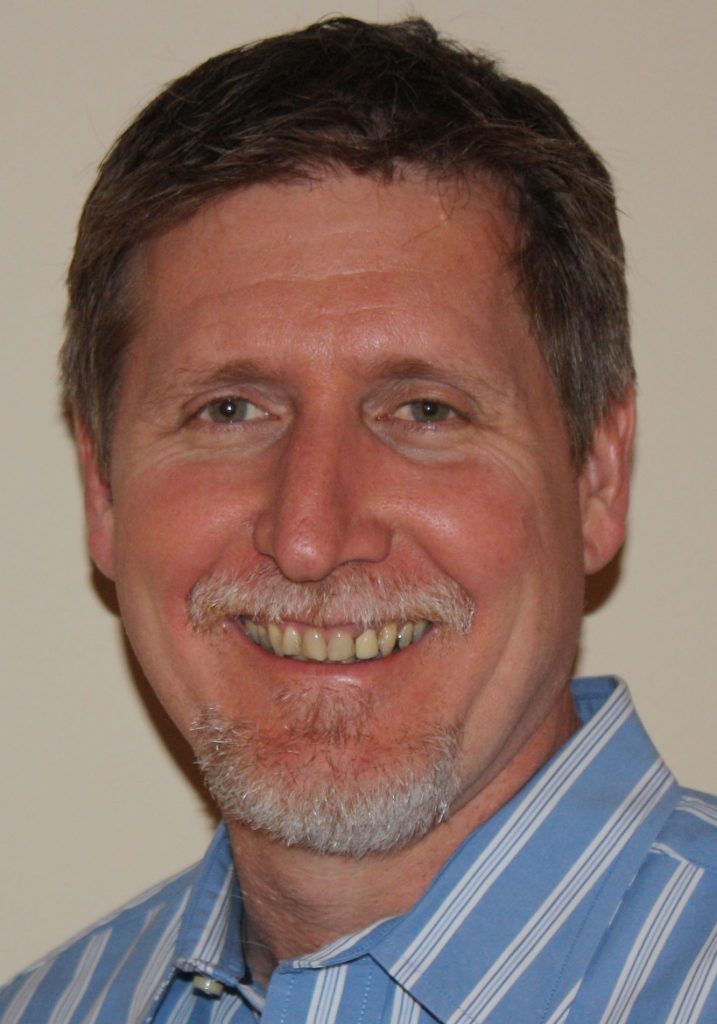
Willie O. Harris
has over 42 y of experience in radiation protection at power reactors, which has included over 25 y in program management and oversight. Prior to retirement he was the corporate radiation protection manager of the largest fleet of nuclear power plants in the United States. He is currently Senior Director of Radiation Protection for CN Associates. In this role, he has written several technical reports for the Electric Power Research Institute, provides consulting services for several sites in decommissioning and operational radiation protection programs at nuclear power plants.
He holds a bachelor’s degree in radiation protection. He is a certified health physicist, a registered radiation protection technologist, and held a senior reactor operator certification. Mr. Harris has served on the Council since 2017 and is a member Program Area Committee 2 and the budget committee. He has been a member of the Health Physics Society since 1990. He is currently the Secretary for the AAHP Executive committee. |
|
| SC 2-9 | 
Willie O. Harris
has over 42 y of experience in radiation protection at power reactors, which has included over 25 y in program management and oversight. Prior to retirement he was the corporate radiation protection manager of the largest fleet of nuclear power plants in the United States. He is currently Senior Director of Radiation Protection for CN Associates. In this role, he has written several technical reports for the Electric Power Research Institute, provides consulting services for several sites in decommissioning and operational radiation protection programs at nuclear power plants.
He holds a bachelor’s degree in radiation protection. He is a certified health physicist, a registered radiation protection technologist, and held a senior reactor operator certification. Mr. Harris has served on the Council since 2017 and is a member Program Area Committee 2 and the budget committee. He has been a member of the Health Physics Society since 1990. He is currently the Secretary for the AAHP Executive committee. |
|
| PAC 3 | 
BROOKE R. BUDDEMEIER is an associate program leader in the Global Security Directorate of Lawrence Livermore National Laboratory (LLNL). He supports the Risk and Consequence Management Division in their efforts to evaluate the potential risk and consequence of radiological and nuclear terrorism. Mr. Buddemeier is a member of NCRP and served on the scientific committees which developed Commentary No. 19 - Key Elements of Preparing Emergency Responders for Nuclear and Radiological Terrorism (2005) and NCRP Report No. 165 – Responding to a Radiological or Nuclear Terrorism Incident: A Guide for Decision Makers (2010). From 2003 through 2007, he was on assignment with the Department of Homeland Security's as the weapons of mass destruction emergency response and consequence management program manager for Science and Technology's emergency preparedness and response portfolio. He supported Federal Emergency Management Agency and the Homeland Security Operations Center as a radiological emergency response subject matter expert. He also facilitated the department's research, development, test and evaluation process to improve emergency response through better capabilities, protocols and standards. Prior to that, he was part of the LLNL Nuclear Counterterrorism Program and coordinated LLNL's involvement in the National Nuclear Security Administration's Radiological Assistance Program (RAP) for California, Nevada and Hawaii. RAP is a national emergency response resource that assists federal, state and local authorities in the event of a radiological incident. As part of RAP's outreach efforts, Mr. Buddemeier has provided radiological responder training and instrumentation workshops to police, firefighters, and members of other agencies throughout the nation and abroad. He has also provided operational health physics support for various radiochemistry, plutonium handling, accelerator and dosimetry operations. He is Certified Health Physicist who received his Master's in Radiological Health Physics from San Jose State University and a BS in Nuclear Engineering from the University of California, Santa Barbara. 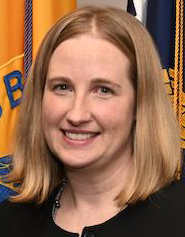
Julie M. Sullivan
|
|
| PAC 4 | 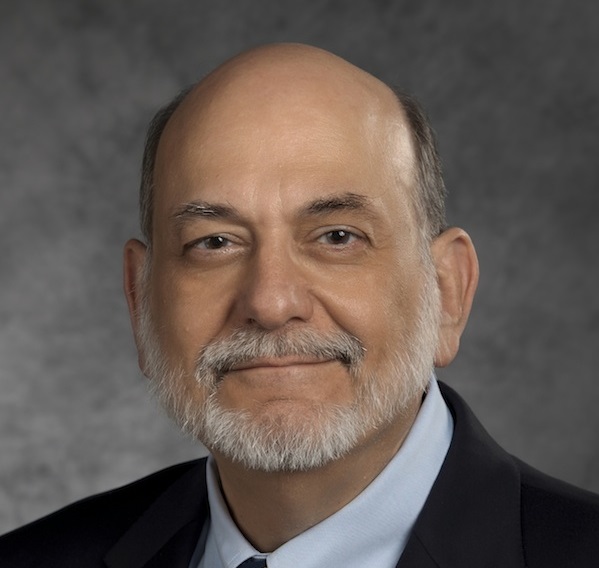
DONALD L. MILLER
Dr. Miller was elected to NCRP in 2006. He currently serves on the Board of Directors and as Chair of Program Area Committee 4 (Radiation Protection in Medicine). He is an author of NCRP Reports Nos. 168, 172, 177, 180, 184, and 185, and Statements Nos. 11 and 13. He served on the International Commission on Radiological Protection (ICRP) Committee 3 (Protection in Medicine) as a member from 2010 to 2013, and as Vice-Chair from 2013 to 2017. He is an author of ICRP Publications 117, 120, 135, and 139. He was Vice-Chair for the U.S. Environmental Protection Administration’s Federal Guidance Report No. 14, is a consultant to the International Atomic Energy Agency, and is a member of the World Health Organization’s Core Group of Experts on radiation protection of patients and staff. Dr. Miller was Professor of Radiology at the Uniformed Services University in Bethesda, Maryland from 1993 to 2012. He has served as Associate Editor of Radiology and the Journal of Vascular and Interventional Radiology and is an author of more than 200 papers in peer-reviewed journals and more than 40 book chapters and reports. He is a Fellow of the Society of Interventional Radiology (SIR) and the American College of Radiology (ACR), and an Honorary Member of both the American Association of Physicists in Medicine and the International Organization for Medical Physics. He chaired SIR’s Safety and Health Committee from 1999 to 2011 and the ACR Guidelines Interventional Committee from 2008 to 2012. His research interests have centered on radiation protection in medicine. 
LAWRENCE T. DAUER
is an Attending Physicist in the Departments of Medical Physics and Radiology at Memorial Sloan Kettering Cancer Center and serves at their Corporate Radiation Safety Officer. He serves as a member of the Nuclear and Radiation Studies Board of the National Academy of Sciences, Engineering and Medicine. He is a former Board member and current Council member of NCRP and is the Scientific Director of the Million Person Study. He has served as Chair or Co-Chair on several NCRP scientific committees associated with radiation protection of workers, patients, and members of the public. He served 7 y on the International Commission on Radiological Protection Committee 3, Radiation Protection in Medicine. |
|
| SC 4-12 | Risk Management Stratification of Equipment and Training for Fluoroscopy |
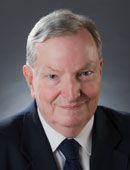
Stephen Balter

DONALD L. MILLER
Dr. Miller was elected to NCRP in 2006. He currently serves on the Board of Directors and as Chair of Program Area Committee 4 (Radiation Protection in Medicine). He is an author of NCRP Reports Nos. 168, 172, 177, 180, 184, and 185, and Statements Nos. 11 and 13. He served on the International Commission on Radiological Protection (ICRP) Committee 3 (Protection in Medicine) as a member from 2010 to 2013, and as Vice-Chair from 2013 to 2017. He is an author of ICRP Publications 117, 120, 135, and 139. He was Vice-Chair for the U.S. Environmental Protection Administration’s Federal Guidance Report No. 14, is a consultant to the International Atomic Energy Agency, and is a member of the World Health Organization’s Core Group of Experts on radiation protection of patients and staff. Dr. Miller was Professor of Radiology at the Uniformed Services University in Bethesda, Maryland from 1993 to 2012. He has served as Associate Editor of Radiology and the Journal of Vascular and Interventional Radiology and is an author of more than 200 papers in peer-reviewed journals and more than 40 book chapters and reports. He is a Fellow of the Society of Interventional Radiology (SIR) and the American College of Radiology (ACR), and an Honorary Member of both the American Association of Physicists in Medicine and the International Organization for Medical Physics. He chaired SIR’s Safety and Health Committee from 1999 to 2011 and the ACR Guidelines Interventional Committee from 2008 to 2012. His research interests have centered on radiation protection in medicine. |
| SC 4-13 | Patient Shielding in Medical Imaging |
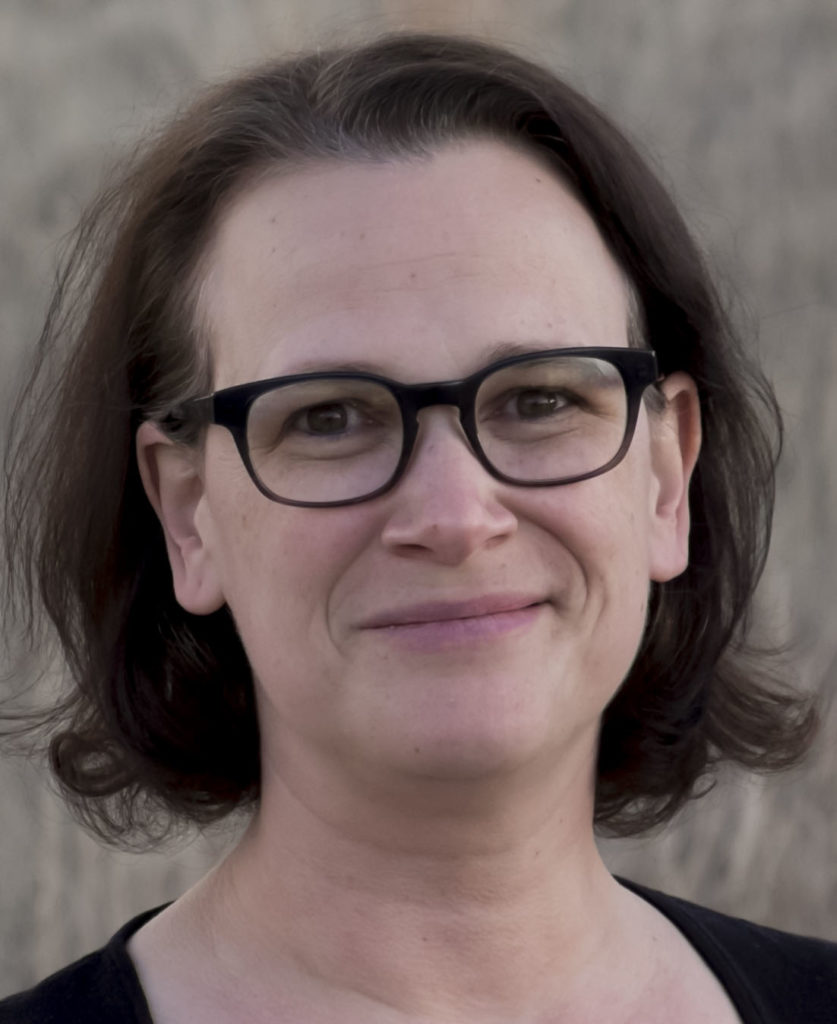
Rebecca Milman
is an Imaging Medical Physicist and Associate Professor at the University of Colorado School of Medicine in Aurora, Colorado. Dr. Marsh is a graduate of the University of Texas Graduate School of Biomedical Sciences in Houston, Texas, and completed her imaging residency at M.D. Anderson Cancer Center. She is certified by the American Board of Radiology in Diagnostic Medical Physics. Dr. Marsh participates in a wide range of volunteer activities with the American Association of Physicists in Medicine and the American Board of Radiology. Currently, she provides clinical services for x-ray-based imaging modalities and has a specific interest in promoting sensibility in the practice of clinical medical physics. Her primary professional goal is to help provide healthcare professionals and patients with accurate and consistent information about radiation risk from diagnostic imaging procedures. |
| PAC 5 | 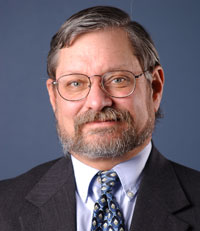
WILLIAM E. KENNEDY, JR.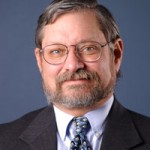 has extensive experience as a project manager, task leader, and individual contributor covering a broad range of health physics and nuclear engineering topics. He received his BS and MS degrees in Nuclear Engineering from Kansas State University. Mr. Kennedy has been involved in the development of environmental pathway and radiation dosimetry models used to assess potential health and environmental impacts that resulted from releases of radionuclides to the environment. He specializes in the use of these models in environmental dose reconstruction, radioactive materials transport, radioactive waste disposal, and evaluation of nuclear facility operating practices. Over the past 37 y, Mr. Kennedy has led and contributed to a variety of projects for the U.S. Nuclear Regulatory Commission, the U.S. Department of Energy, the Electric Power Research Institute, and private industry. He has been involved with development of the technical basis for revised standards and regulations, and serves as the chair of ANSI/HPS N13.12, Surface and volume Radioactivity Standards for Clearance. He served as a consultant to the International Atomic Energy Agency (IAEA), Vienna, Austria, and was a member of the IAEA Advisory Groups to evaluate the Derivation of Exempt Quantities for Application to Terrestrial Waste Disposal and Derivation of Exempt Quantities for Recycle of Materials from Nuclear Facilities. He was an invited lecturer for IAEA training courses on Management of Radioactive Waste from Nuclear Power Plants at Argonne National Laboratory; on Safety Assessment Modeling for Low and Intermediate Radwastes in Rio de Janeiro, Brazil and in Cairo, Egypt; and on Environmental Monitoring in Kiev, Ukraine. In 1990, he received the Health Physics Society's (HPS) prestigious Elda E. Anderson Award. He served as a member of the HPS Board of Directors from 1998 through 2001 and was selected as a fellow of the society in 2002. He was a member of the U.S. delegation to the 10th Congress of the International Radiation Protection Association in Hiroshima, Japan. |
|
| PAC 6 | 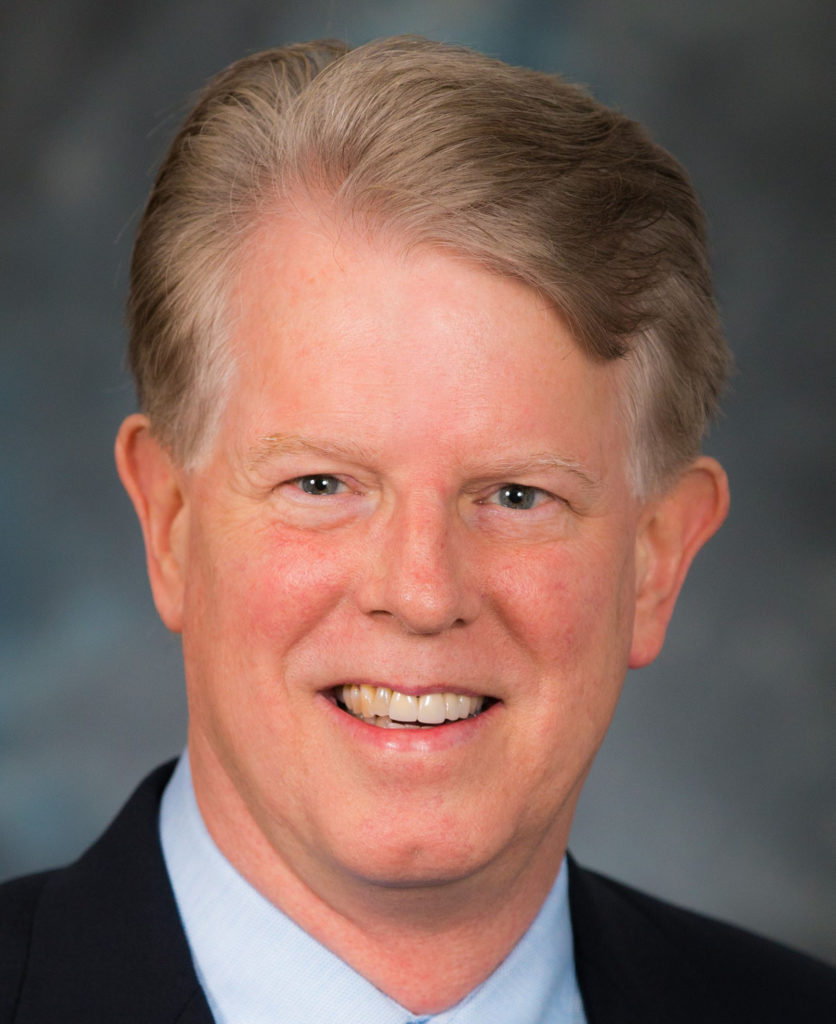
WESLEY E. BOLCH
is Professor of Biomedical Engineering and Medical Physics in the J. Crayton Pruitt Family Department of Biomedical Engineering at the University of Florida (UF). He serves as Director of the Advanced Laboratory for Radiation Dosimetry Studies at UF. Dr. Bolch earned his BSE degree in environmental engineering in 1984, his ME and PhD degrees in radiological physics in 1986 and 1998, respectively, from the University of Florida. He has been certified by the American Board of Health Physics since 1994 and licensed in Radiological Health Engineering by the Texas Board of Professional Engineers since 1992. In 2011, Dr. Bolch was elected Fellow of both the Health Physics Society and the American Association of Physicists in Medicine. He has been a member of the Society of Nuclear Medicine’s Medical Internal Radiation Dose (MIRD) Committee since 1993, a member of NCRP since 2005, and a member of Committee 2 of the International Commission on Radiological Protection (ICRP) since 2005. Within the latter, he serves as C2 Secretary and Leader of the ICRP Task Group on Computational Phantoms and Radiation Transport. He has published over 200 peer-reviewed journal articles, co-authored/edited 14 books/book chapters, and served as author on two NCRP reports, two ICRP publications, and two MIRD monographs. Dr. Bolch has managed a broad research program including (1) National Institutes of Health (NIH) and U.S. Department of Energy funded projects to construct high-resolution models of the skeleton to support dose-response studies in radionuclide therapy and radiation epidemiology; (2) NIH funded projects to develop scalable NURBS-based and voxel-based computational phantoms of adult and pediatric patients and associated software for organ dose assessment in nuclear medicine, computed tomography, interventional fluoroscopy, and radiotherapy; (3) private company funded projects to develop stereotactic kilovoltage x-ray treatments for age-related macular degeneration and glaucoma; and (4) Centers for Disease Control and Prevention funded projects in stochastic modeling of worker inhalation and gamma-ray exposures following radiological accidents and potential terrorist events. He is the recipient of the 2014 Distinguish Scientific Achievement Award by the Health Physics Society acknowledging outstanding contributions to the science and technology of radiation safety. 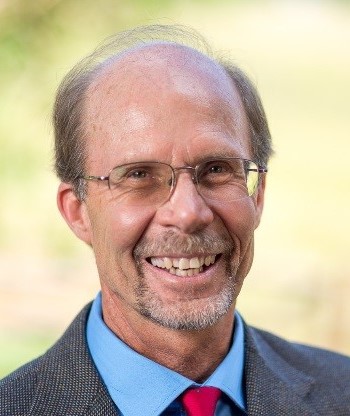
Jeffrey J. Whicker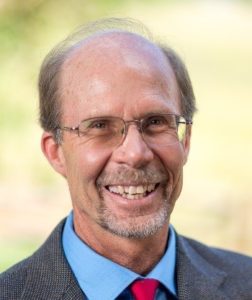
worked at Los Alamos National Laboratory as a health physicist and scientist for over 30 y. He received an MS in Health Physics and a PhD in Environmental and Radiological Health Science from Colorado State University and is certified by the American Board of Health Physics. Dr. Whicker is an elected Board Member of NCRP, served as a Board Member of the Health Physics Society, consulted for the International Atomic Energy Agency since 2018 on environmental sampling and remediation decisions, and was on the Editorial Board for the journal Radiation Protection Dosimetry for 8 y. He has been the recipient of numerous achievement awards including the U.S. Department of Energy Secretary’s Honor Award (2020). He is an author or co-author of hundreds of scientific publications, invited talks, book chapters, and presentations mostly on indoor and outdoor radiological air quality and measurements that span issues ranging from worker protection, homeland security, radiological dose and risk assessment for the public and the environment, and environmental quality. His research in outdoor air quality focused on aerosol transport through wind-driven suspension of contaminated soil and the effects of ecosystem disturbance on environmental transport rates. This research has broad implications for both public and ecosystem health. |
|
| SC 6-13 | Methods and Models for Estimating Organ Doses from Intakes of Radium |  Derek Jokisch Derek Jokisch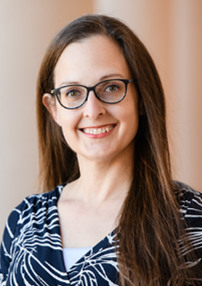
Nicole Martinez
is an Associate Professor in the Department of Environmental Engineering and Earth Sciences at Clemson University in the United States. She also holds a Joint Faculty Appointment at Oak Ridge National Laboratory within the Center for Radiation Protection Knowledge.
She graduated from Texas A&M University with a BS degree in applied mathematical sciences, and thereafter became an officer in the US Navy where she was a nuclear power instructor and later a radiation health officer. Followed by a brief stint working in industry, Dr. Martinez attended graduate school at Colorado State University, where she received an MS and PhD in radiological health sciences, with emphasis in health physics and radioecology, respectively. While working on her doctorate, she spent about a year and a half as part of a research team at Savannah River National Laboratory.
Dr. Martinez’s current research focuses on dosimetric modeling and the behavior and effects of radiological contaminants in the environment. In addition, she is interested in non-technical issues within radiation protection, such as ethics and diversity, equity, and inclusion. She is currently serving as Vice-Chair of Committee 4 of the International Commission of Radiological Protection and is the Secretary of the Health Physics Society for the 2021-2023 term. She is the recipient of the 2018 Bo Lindell Medal from the ICRP, the 2019 Elda Anderson Award from the HPS, and is a Certified Health Physicist. |
| PAC 7 | Radiation Education, Risk Communication, and Outreach | 
Randall N. Hyer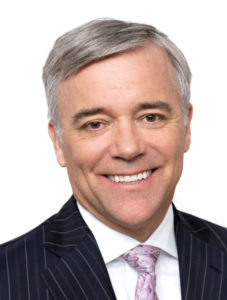
has over three decades’ experience in high-concern, low-trust public communications. He advises the National Academy of Sciences, Engineering and Medicine, lectures at Harvard University, and advises/educates both individuals and organizations on how to implement best practices in risk and crisis communication. His diverse experience covers disease outbreaks, nuclear emergencies, natural disasters, outbreak investigations, product safety concerns, reorganizations and downsizing, budget cuts, rogue employee mitigations, health hazard evaluations, and strategic communications. As the Senior Vice President for Global Medical at Moderna, Dr. Hyer helped develop, communicate, and manage the global rollout of the Moderna COVID-19 mRNA vaccine. In 2017, he was pivotal in engaging the scientific, medical and policy communities to achieve Food and Drug Administration approval of a new adult hepatitis B vaccine (HEPLISAV-B®), the first vaccine using a truly novel adjuvant. Board-certified in general preventive medicine and public health, Dr. Hyer earned his MD from Duke and trained at Walter Reed Hospital and Harvard. He received the PhD from the University of Oxford researching the genetics of juvenile diabetes. His studies won the National Institutes of Health "Outstanding Research Award for Clinical Trainees" and are widely cited. At Oxford University, Dr. Hyer founded the biotechnology company, Alpha-Plus DNA. He also served as a U.S. Congressional Fellow for Senator Pete V. Domenici (R. -NM). Dr. Hyer helped introduce legislation to safeguard genetic privacy that eventually became the Genetic Information Non-discrimination Act (GINA) of 2008. Dr. Hyer graduated with Distinction from the U.S. Naval Academy. Rising to the rank of Commander, his naval service included four major military combat operations in Europe and southwest Asia as well as three major complex humanitarian emergencies with Kosovo relief, Mozambique flood relief, and the Indian Ocean tsunami. Dr. Hyer also served as the Winter-Over Medical Officer at the McMurdo and South Pole Stations, Antarctica as the sole physician. At the World Health Organization (WHO) in Geneva, Dr. Hyer served as a Medical Officer and Military Liaison. Among other duties, he helped facilitated the WHO response to various crisis such as anthrax, Ebola, the 2003 SARS outbreak, tsunamis, earthquakes, and pandemic influenza. Dr. Hyer’s perspectives and contributions span his residing in eight and travelling to 100 plus countries in diverse roles across the public and private sectors. |
| PAC 8 | 
David A. Savitz
He has directed 30 doctoral dissertations and 15 master’s theses. He is the author of over 400 papers in professional journals and editor or author of three books. He has served as editor at the American Journal of Epidemiology and as a member of the Epidemiology and Disease Control-1 study section of the National Institutes of Health and currently is an editor at Epidemiology. He was President of the Society for Epidemiologic Research and the Society for Pediatric and Perinatal Epidemiologic Research and North American Regional Councilor for the International Epidemiological Association. Dr. Savitz is a member of the National Academy of Sciences Institute of Medicine. He came to Brown in 2010 from Mount Sinai School of Medicine, where he had served as the Charles W. Bluhdorn Professor of Community and Preventive Medicine and Director of Disease Prevention and Public Health Institute since 2006. Earlier, he taught and conducted research at the University of North Carolina School of Public Health and at the Department of Preventive Medicine and Biometrics at the University of Colorado School of Medicine. Dr. Savitz received his undergraduate training in Psychology at Brandeis University, a Master’s degree in Preventive Medicine at Ohio State University in 1978, and the PhD in Epidemiology from the University of Pittsburgh Graduate School of Public Health in 1982. |
|
| SC 8-1 | Development of NCRP Informational Webpages to Provide Authoritative Information About the Use of Wireless Technology and Current Evidence on Health Effects | 
David A. Savitz
He has directed 30 doctoral dissertations and 15 master’s theses. He is the author of over 400 papers in professional journals and editor or author of three books. He has served as editor at the American Journal of Epidemiology and as a member of the Epidemiology and Disease Control-1 study section of the National Institutes of Health and currently is an editor at Epidemiology. He was President of the Society for Epidemiologic Research and the Society for Pediatric and Perinatal Epidemiologic Research and North American Regional Councilor for the International Epidemiological Association. Dr. Savitz is a member of the National Academy of Sciences Institute of Medicine. He came to Brown in 2010 from Mount Sinai School of Medicine, where he had served as the Charles W. Bluhdorn Professor of Community and Preventive Medicine and Director of Disease Prevention and Public Health Institute since 2006. Earlier, he taught and conducted research at the University of North Carolina School of Public Health and at the Department of Preventive Medicine and Biometrics at the University of Colorado School of Medicine. Dr. Savitz received his undergraduate training in Psychology at Brandeis University, a Master’s degree in Preventive Medicine at Ohio State University in 1978, and the PhD in Epidemiology from the University of Pittsburgh Graduate School of Public Health in 1982. |



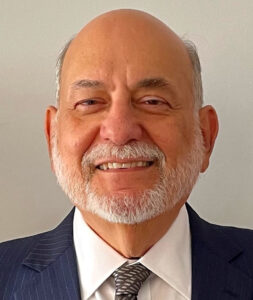 is the Chief Medical Officer for the Office of Radiological Health at the Food and Drug Administration’s (FDA) Center for Devices and Radiological Health. He earned a BA from Yale University and an MD from New York University, and completed a residency in diagnostic radiology and a fellowship in interventional radiology at New York University Medical Center. He is board certified in Diagnostic Radiology and Vascular and Interventional Radiology. Prior to joining FDA, he practiced interventional radiology for three decades at the National Institutes of Health and the National Naval Medical Center in Bethesda, Maryland.
is the Chief Medical Officer for the Office of Radiological Health at the Food and Drug Administration’s (FDA) Center for Devices and Radiological Health. He earned a BA from Yale University and an MD from New York University, and completed a residency in diagnostic radiology and a fellowship in interventional radiology at New York University Medical Center. He is board certified in Diagnostic Radiology and Vascular and Interventional Radiology. Prior to joining FDA, he practiced interventional radiology for three decades at the National Institutes of Health and the National Naval Medical Center in Bethesda, Maryland. 
 is a Clinical Professor of Radiology and Medicine at Columbia University. He earned an MS in Radiological Physics and a PhD in Experimental Physics. He is certified in Radiological Physics by the American Board of Radiology and licensed by New York State in Diagnostic Imaging, Radiation Therapy Physics, and Medical Health Physics. He is a past President of the Radiological and Medical Physics Society of New York, past Vice President of the Radiological Society of North America, a member of the Standards and Safety Committees of the Society for Interventional Radiology, and a member of editorial and review boards of several scientific journals. He received the Marvin M.D. Williams award from the American Association of Physicists in Medicine (AAPM) in 2017. He is a fellow of AAPM, the American College of Medical Physics, the American College of Radiology, the Society for Cardiovascular Angiography and Interventions, and the Society of Interventional Radiology. He currently serves on International Electrotechnical Commission working groups responsible for safety and performance standards for projection and interventional radiology. He has been a member of NCRP Council for more than a decade. He chaired scientific committees that produced NCRP Report No. 168, Radiation Dose Management for Fluoroscopically-Guided Interventional Medical Procedures and NCRP Statement No. 11, Outline of Administrative Policies for Quality Assurance and Peer Review of Tissue Reactions Associated with Fluoroscopically-Guided Interventions (2014). He has over 100 refereed publications in the areas of radiological imaging, radiological health, and related topics.
is a Clinical Professor of Radiology and Medicine at Columbia University. He earned an MS in Radiological Physics and a PhD in Experimental Physics. He is certified in Radiological Physics by the American Board of Radiology and licensed by New York State in Diagnostic Imaging, Radiation Therapy Physics, and Medical Health Physics. He is a past President of the Radiological and Medical Physics Society of New York, past Vice President of the Radiological Society of North America, a member of the Standards and Safety Committees of the Society for Interventional Radiology, and a member of editorial and review boards of several scientific journals. He received the Marvin M.D. Williams award from the American Association of Physicists in Medicine (AAPM) in 2017. He is a fellow of AAPM, the American College of Medical Physics, the American College of Radiology, the Society for Cardiovascular Angiography and Interventions, and the Society of Interventional Radiology. He currently serves on International Electrotechnical Commission working groups responsible for safety and performance standards for projection and interventional radiology. He has been a member of NCRP Council for more than a decade. He chaired scientific committees that produced NCRP Report No. 168, Radiation Dose Management for Fluoroscopically-Guided Interventional Medical Procedures and NCRP Statement No. 11, Outline of Administrative Policies for Quality Assurance and Peer Review of Tissue Reactions Associated with Fluoroscopically-Guided Interventions (2014). He has over 100 refereed publications in the areas of radiological imaging, radiological health, and related topics. is Professor of Epidemiology in the Brown University School of Public Health, with a joint appointment in Obstetrics and Gynecology in the Alpert Medical School. His epidemiological research has addressed a wide range of many important public health issues including environmental hazards in the workplace and community, reproductive health outcomes, and environmental influences on cancer. He has done extensive work on health effects of nonionizing radiation, pesticides, drinking water treatment byproducts, and perfluorinated compounds.
is Professor of Epidemiology in the Brown University School of Public Health, with a joint appointment in Obstetrics and Gynecology in the Alpert Medical School. His epidemiological research has addressed a wide range of many important public health issues including environmental hazards in the workplace and community, reproductive health outcomes, and environmental influences on cancer. He has done extensive work on health effects of nonionizing radiation, pesticides, drinking water treatment byproducts, and perfluorinated compounds. News & Events
News & Events